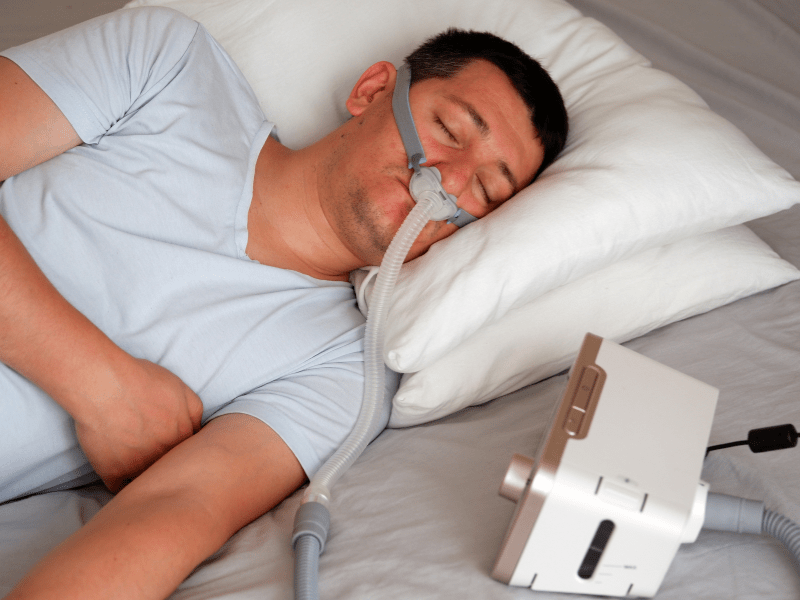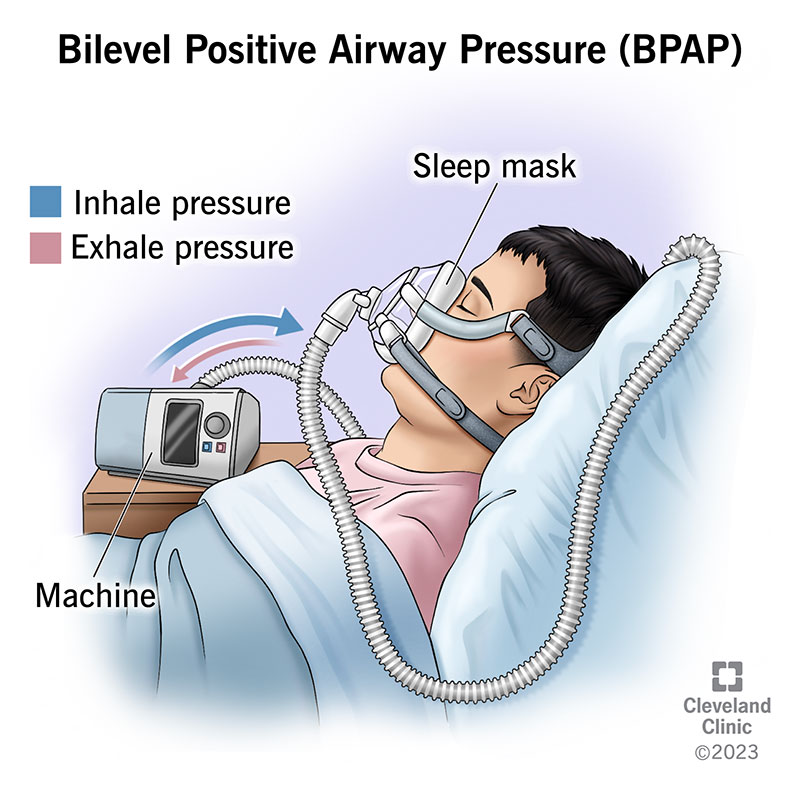Bipap vs. CPAP: Which Is the Ideal for Your Sleep Condition?
When navigating the intricacies of sleep disorders, the selection between BiPAP and CPAP therapy is a crucial factor to consider. While CPAP gives a stable airflow ideal for obstructive rest apnea, BiPAP's dual stress setups might boost convenience for those with more detailed respiratory concerns.
Understanding Rest Disorders
Sleep disorders encompass a variety of conditions that disrupt normal sleep patterns, affecting both the quality and duration of rest. These disorders can show up in various forms, consisting of sleeping disorders, rest apnea, narcolepsy, uneasy leg syndrome, and parasomnias. Each problem provides distinct challenges, often leading to substantial daytime exhaustion, cognitive problems, and emotional disturbances.
Insomnia is defined by problem falling or remaining asleep, while sleep apnea involves repeated disturbances in breathing throughout rest, typically leading to fragmented remainder. Narcolepsy, on the various other hand, is marked by excessive daytime drowsiness and abrupt rest strikes. Agitated leg syndrome triggers awkward sensations in the legs, prompting an unmanageable impulse to relocate them, which can additionally hinder the ability to sleep.
The effect of sleep conditions prolongs beyond private wellness, affecting total performance, partnerships, and top quality of life. Understanding the specific nature of each disorder is important for reliable medical diagnosis and therapy. As rest wellness comes to be significantly identified as an important element of general health, dealing with these conditions is essential for improving both sleep high quality and day-to-day performance.
How CPAP Functions
Continual Favorable Respiratory Tract Pressure (CPAP) treatment is frequently employed as a key treatment for obstructive sleep apnea (OSA) The system of CPAP involves the use of a machine that delivers a constant stream of air via a mask used during rest. This air flow preserves positive stress in the respiratory tract, preventing the collapse or blockage of the throat that can take place throughout rest.
When a person takes a breath in, the CPAP device provides a continual flow of air, making certain that the respiratory tract remains open - BiPAP Rental. This not just relieves the symptoms of OSA, such as snoring and interrupted sleep patterns, however likewise minimizes the associated health threats, consisting of cardiovascular difficulties and daytime tiredness
The pressure setups on a CPAP maker can be personalized to fulfill private patient requirements, often determined with a sleep research. Patients normally undergo titration research studies to locate the ideal stress level for their one-of-a-kind condition. Routine follow-up and adjustments may be essential to guarantee efficiency and convenience. In general, CPAP treatment has actually been revealed to significantly enhance the top quality of sleep and general wellness for people experiencing obstructive rest apnea.
Just How BiPAP Functions
BiPAP, or Bilevel Favorable Respiratory Tract Pressure, is a specialized form of non-invasive ventilation that is particularly useful for individuals with problems such as complicated sleep apnea or breathing conditions. Unlike CPAP, which provides a constant stream of air at a single pressure, BiPAP provides two distinct stress setups: a greater inspiratory stress for breathing and a reduced expiratory pressure for exhalation. This dual-pressure method permits much easier breathing, minimizing the initiative needed during exhalation.
The device runs via a mask fitted over the nose or mouth, attached to an equipment that produces atmospheric pressure. When the individual inhales, the machine provides the higher stress to help with airflow, guaranteeing that the airway remains open. Upon exhalation, the equipment immediately reduces the pressure, making it extra comfy for the person to take a breath out.

Trick Distinctions In Between BiPAP and CPAP

In comparison, BiPAP (Bilevel Favorable Air passage Stress) provides two different pressure setups: one for inhalation and a lower one for exhalation. This twin pressure system enables for even more comfortable breathing, specifically for patients who battle with exhaling against a constant stress. BiPAP is frequently suggested for people with complex sleep apnea, chronic obstructive lung condition (COPD), or those that call for additional support during sleep.
In addition, the intricacy of BiPAP devices usually causes a greater price and requires more careful titration than CPAP. BiPAP Rental. Comprehending these crucial distinctions can assist in recognizing which device may be preferable for certain rest problems, establishing the foundation for enlightened therapy choices
Selecting the Right Treatment
Just how can one establish the most suitable treatment for taking care of rest problems? The choice between BiPAP and CPAP therapy mainly hinges on the specific characteristics of the rest problem, the client's overall health, and their convenience with the gadget. CPAP, which provides a continual stream of air, is generally suggested for obstructive sleep apnea (OSA) It keeps an open air passage during rest, properly protecting against hypopneas and apneas.
On the other hand, BiPAP provides 2 levels of stress: one for inhalation and a reduced one for exhalation. This double stress system is helpful for clients with complex rest apnea or moved here those who experience trouble exhaling versus a continuous stress. Additionally, BiPAP is often suggested for individuals with respiratory system conditions, such as chronic obstructive pulmonary condition (COPD), where varying stress settings can enhance comfort and conformity.
Eventually, a complete assessment by a rest specialist, including a rest research study, can help figure out which treatment lines up ideal with the client's demands. Factors such as pop over here comfort, convenience of use, and certain clinical conditions must also be taken into factor to consider to optimize therapy end results.
Conclusion
In recap, both BiPAP and CPAP serve distinctive purposes in the monitoring of sleep conditions. CPAP works for obstructive rest apnea through constant air flow, while BiPAP provides double pressure settings that improve comfort for those with complicated sleep apnea or breathing problems. The option between these therapies ought to be directed by private requirements and conditions, requiring a detailed analysis by a rest professional to make certain optimum therapy results investigate this site and enhanced quality of sleep.

Generally, CPAP therapy has been revealed to dramatically improve the high quality of rest and total health for individuals enduring from obstructive sleep apnea.
BiPAP is typically suggested for people with intricate rest apnea, chronic obstructive lung illness (COPD), or those that call for added assistance during rest.
CPAP is reliable for obstructive sleep apnea with constant air movement, while BiPAP supplies twin stress setups that boost convenience for those with intricate rest apnea or respiratory system issues.
 Emilio Estevez Then & Now!
Emilio Estevez Then & Now! Seth Green Then & Now!
Seth Green Then & Now! Sam Woods Then & Now!
Sam Woods Then & Now! Bill Murray Then & Now!
Bill Murray Then & Now! Peter Billingsley Then & Now!
Peter Billingsley Then & Now!